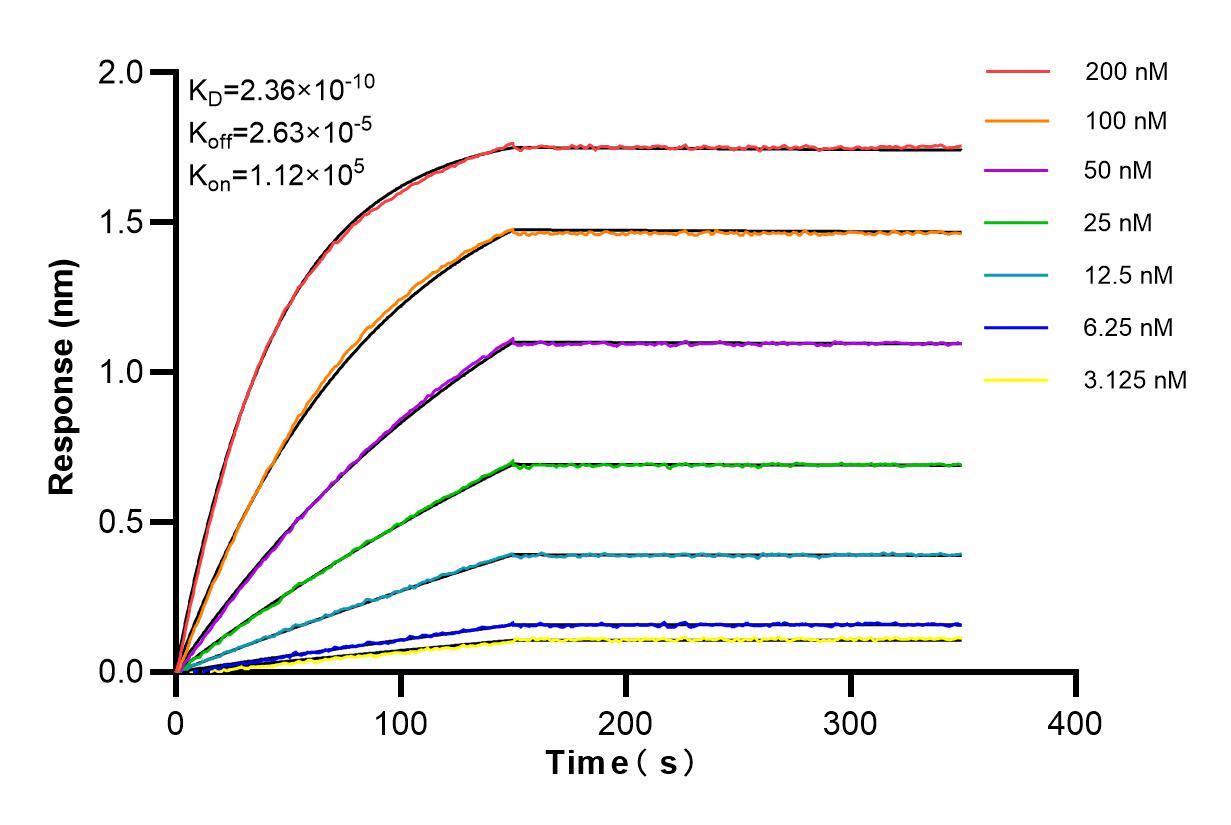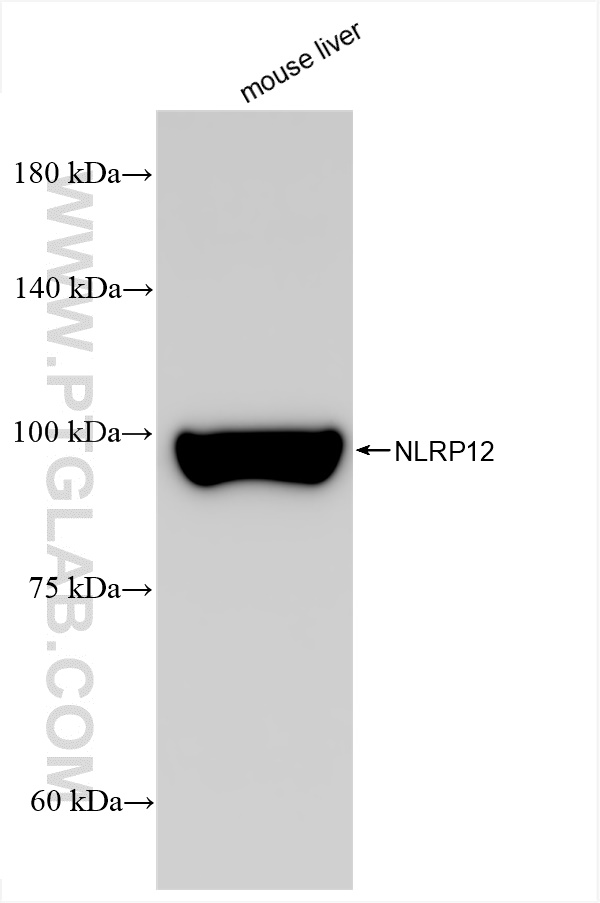Tested Applications
| Positive WB detected in | mouse liver tissue |
Recommended dilution
| Application | Dilution |
|---|---|
| Western Blot (WB) | WB : 1:5000-1:50000 |
| It is recommended that this reagent should be titrated in each testing system to obtain optimal results. | |
| Sample-dependent, Check data in validation data gallery. | |
Product Information
83123-6-RR targets NLRP12 in WB, ELISA applications and shows reactivity with human, mouse samples.
| Tested Reactivity | human, mouse |
| Host / Isotype | Rabbit / IgG |
| Class | Recombinant |
| Type | Antibody |
| Immunogen | NLRP12 fusion protein Ag34281 Predict reactive species |
| Full Name | NLR family, pyrin domain containing 12 |
| Calculated Molecular Weight | 1061 aa, 120 kDa |
| Observed Molecular Weight | 95-110 kDa |
| GenBank Accession Number | BC028069 |
| Gene Symbol | NLRP12 |
| Gene ID (NCBI) | 91662 |
| RRID | AB_3670832 |
| Conjugate | Unconjugated |
| Form | Liquid |
| Purification Method | Protein A purfication |
| UNIPROT ID | P59046 |
| Storage Buffer | PBS with 0.02% sodium azide and 50% glycerol , pH 7.3 |
| Storage Conditions | Store at -20°C. Stable for one year after shipment. Aliquoting is unnecessary for -20oC storage. 20ul sizes contain 0.1% BSA. |
Background Information
NACHT, LRR and PYD domains-containing protein 12 (NLRP12) is also named as Monarch-1, NALP12, PYPAF7 and RNO. NLRP12 is as an essential cytosolic sensor for heme plus PAMPs-mediated PANoptosis, inflammation, and pathology (PMID: 37267949). NLRP12 drives inflammasome and PANoptosome activation, cell death, and inflammation in response to heme plus PAMPs or TNF. TLR2/4-mediated signaling through IRF1 induced Nlrp12 expression, which led to inflammasome formation to induce maturation of IL-1β and IL-18 (PMID: 37267949). NLRP12, a pyrin-containing NLR protein, is a negative regulator of innate immune activation and type I interferon (IFN-I) production (PMID: 36719379).
Protocols
| Product Specific Protocols | |
|---|---|
| WB protocol for NLRP12 antibody 83123-6-RR | Download protocol |
| Standard Protocols | |
|---|---|
| Click here to view our Standard Protocols |





